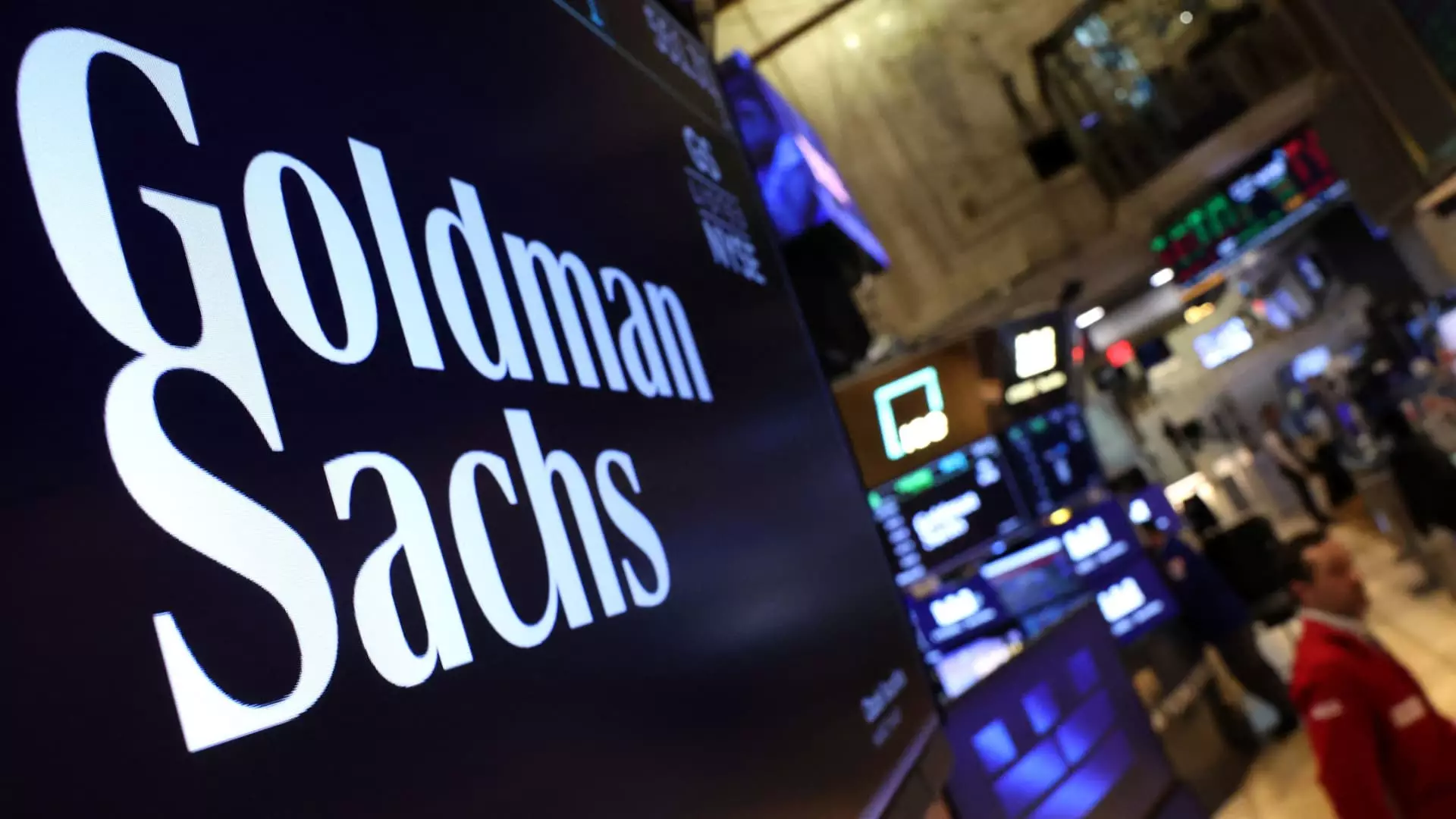In recent announcements, financial titans Goldman Sachs and BNY Mellon have heralded their pioneering effort to digitize the $7.1 trillion money market industry. Promising faster settlement times, seamless transactions, and the potential for global integration, this initiative appears to be a revolutionary step forward. Yet, beneath the glossy veneer of technological progress lies a complex web of risks and uncertainties that are often glossed over. It’s easy to get caught up in the hype of innovation, but true skepticism is necessary to discern whether this approach genuinely enhances efficiency or merely adds another layer of complexity to an already intricate financial ecosystem.
At its core, tokenized money market funds are presented as a technological upgrade—digital certificates of ownership recorded on a blockchain that could streamline operations and open pathways for new types of collateral and arbitrage. But does this promise hold water? Or is it simply a way for major Wall Street players to entrench their dominance under the guise of innovation? Although the firms involved—Goldman Sachs, BNY Mellon, BlackRock, Fidelity—are confident in their vision, history teaches us to be wary of claims that too often outpace practical reality. Blockchain, after all, is not a panacea; its implementation introduces new points of failure, from cyber vulnerabilities to regulatory ambiguities.
The Dangers of Overhyped Efficiency
Proponents like Goldman and BNY suggest that digitization will usher in a new era of efficiency, enabling institutions to transact round-the-clock without the frictions of traditional markets. However, this narrative glosses over the foundational flaw: the very nature of these assets has not fundamentally changed. Money market funds are conservative investments designed to preserve capital while earning a modest yield. Digitizing ownership doesn’t eliminate the underlying risks—counterparty risks, credit risks, or market shocks remain intact.
Furthermore, the prospect of faster settlement and seamless transfers might initially seem beneficial, but it raises the question of whether the current system’s slowness genuinely hinders performance or if it is an acceptable aspect of prudent risk management. For instance, heightened speed could tempt institutions to engage in reckless trading or exploit inefficiencies faster than regulators can respond. Moreover, the transition of traditionally liquid assets into digital form risks creating a false sense of security, pushing investors into a false belief that these assets are immune to systemic shocks simply because they are now digitized.
Regulatory Ambiguities and Potential for New Vectors of Crisis
One of the most significant concerns surrounding tokenized assets is the regulatory landscape. While recent laws like the GENIUS Act point towards a future where stablecoins are perceived as legitimate forms of digital cash, the status of tokenized securities remains precarious. Financial markets thrive under clear rules; when new instruments emerge faster than the regulations, cracks inevitably form.
By positioning tokenized money market funds as the future of cash management, Goldman and BNY are potentially paving the way for a regulatory sandbox that benefits the already dominant financial giants while sidelining smaller players and retail investors. The risk of regulatory arbitrage—where firms exploit loopholes and ambiguities—could lead to financial vulnerabilities that ripple across markets. “Innovation” should never come at the expense of transparency or stability. Yet, the enthusiasm for tokenization hints at a desire to circumvent the lengthy, cumbersome regulatory process by promoting a self-regulating digital ecosystem. This shortsighted approach could be dangerous, especially if these digital assets are widely adopted without thorough oversight.
The Redistribution of Power and Future Implications
In practice, tokenized money market funds meant for institutional use could significantly alter the landscape of global finance. They promise to reduce transaction times and lower costs, but at what expense? These efficiencies primarily benefit the biggest players—large asset managers and banks—while small investors and retail participants are left out of the conversation. The ability to use tokenized funds as collateral, borrow against them, or transfer ownership without liquidation could centralize more power in the hands of monopolistic financial institutions.
This concentration of power undermines the very competitive advantages that blockchain was supposed to bring—decentralization and democratization. Instead, what we see is a carefully crafted narrative designed to reinforce existing hierarchies, cloaked in the language of innovation. For the average investor and taxpayer, the risks are substantial: systemic vulnerabilities that may not surface until it’s too late, compounded by the likelihood of regulatory capture.
A Cautionary Note on the Future of Digital Assets
The push for tokenized money market funds represents a broader trend that blends innovation with strategic market consolidation. While there are potential benefits—such as improved operational efficiency, greater liquidity, and new use cases—the realities are far more nuanced and treacherous than the optimistic projections suggest. We must approach such developments with a healthy dose of skepticism, resisting the siren call of technological salvation. In doing so, we safeguard against a future where financial innovation is not a tool for progress but an instrument for maintaining the status quo, entrenching the most powerful and marginalizing those who are less connected or less resourceful.
This is not merely about new technology; it is about the power it secures and the risks it conceals. As investors, regulators, and policymakers weigh the promises of digital assets, we must prioritize transparency, stability, and fairness over the seductive allure of quick gains and cutting-edge innovation. Only then can we ensure that the future of finance remains a space for genuine progress rather than a club for the well-connected to consolidate further advantage.

